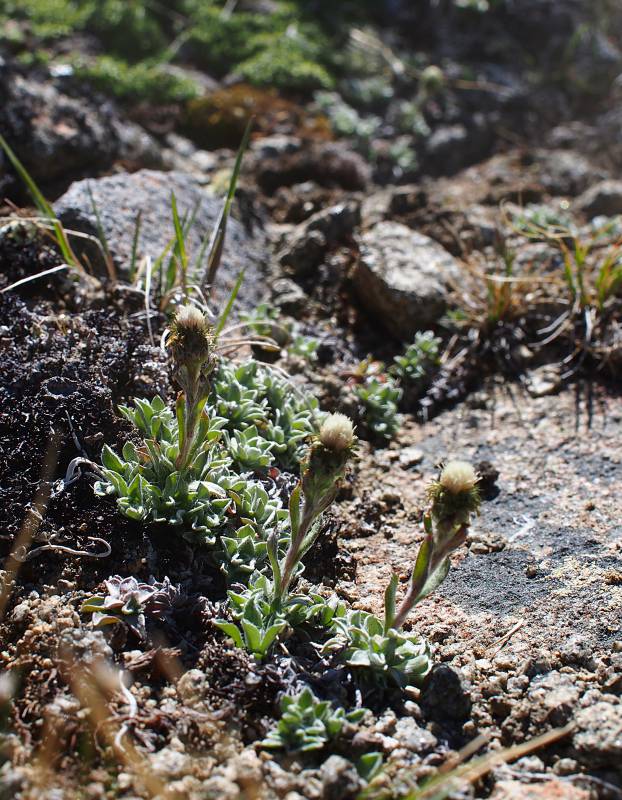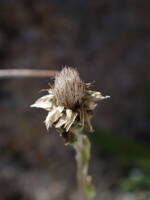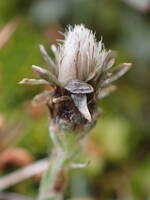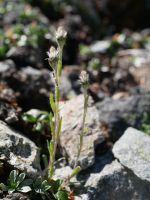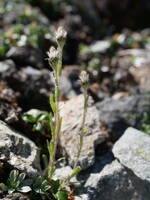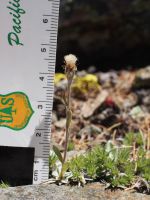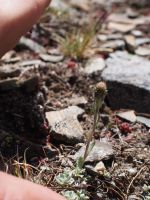Distribution: Reported from the North Cascades in Washington; Alaska to British Columbia, east to Alberta, Montana, and Wyoming; also in the Russian Far East.
Habitat: Alpine meadows, ridges, and rocky outcroppings.
Flowers: July-September
Origin: Native
Growth Duration: Perennial
Conservation Status: Review Group 1 in Washington (WANHP)
Pollination: Apomixis, butterflies, flies, wasps
Perennials or subshrubs; dioecious or gynoecious; stems erect, 5-13 cm tall; stolons 2-4 cm in length.
Leaves basal and cauline; Basal leaves 1-nerved, alternate; petiolate or sessile; spatulate to narrowly spatulate or oblanceolate, 9–18 × 2–4 mm, tips mucronate, abaxial faces tomentose, adaxially glabrous or green-glabrescent, or both gray-pubescent. Cauline leaves linear, 4–11 mm long, margins entire, flagged.
Involucres staminate 5–7 mm, pistillate 5–8 mm, phyllaries distally brown, dark brown, black, or olivaceous; staminate corollas 2.5–3.5 mm, white, yellow, or red, narrowly funnelform or tubular (lobes usually 5, erect to recurved); pistillate corollas 3.5–4 mm, white, yellow, or red, narrowly tubular to filiform; receptacles flat to convex or ovoid, foveolate, epaleate; ray florets 0; disc florets mostly 20–100+; pappi: staminate 3–4 mm (none in gynoecious populations).
Cypselae 1–1.3 mm tall, often glabrous, usually papillate.
Publication: Prodr. 6: 269. 1838.
PNW Herbaria: Specimen records of Antennaria monocephala in the Consortium of Pacific Northwest Herbaria database
WA Flora Checklist: Antennaria monocephala checklist entry
OregonFlora: Antennaria monocephala information
E-Flora BC: Antennaria monocephala atlas page
CalPhotos: Antennaria monocephala photos

